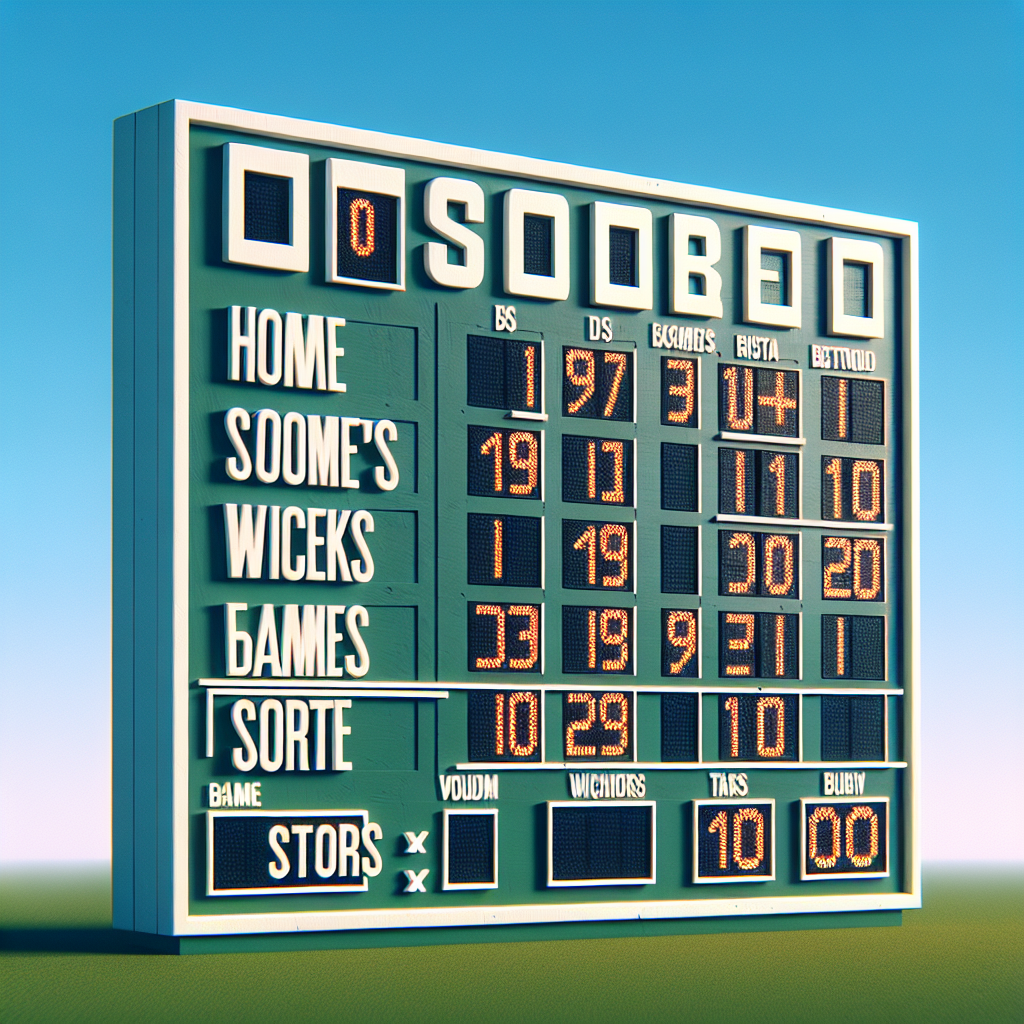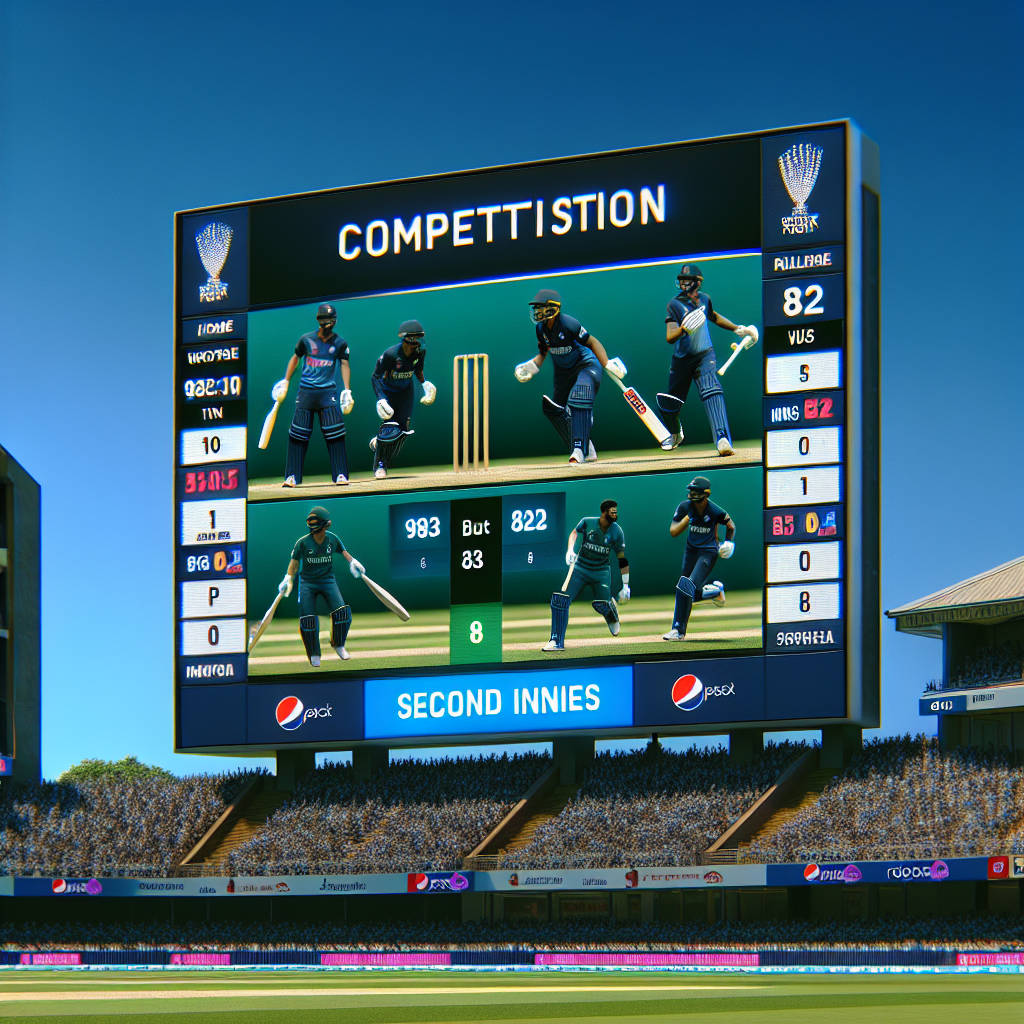
Cricket, often referred to as a gentleman's game, is a sport that has captivated millions around the globe. With its rich history and evolving formats, cricket has become more than just a game; it is a cultural phenomenon. One of the most crucial aspects of following cricket is understanding the scores, which provide a snapshot of the game's progress and outcome. This article delves into the intricacies of cricket news scores, offering insights into how they are calculated, their significance, and how they impact the game.
The Basics of Cricket Scoring
Cricket scoring can seem complex to the uninitiated, but it is fundamentally about tracking runs and wickets. The score in cricket is a reflection of the runs scored by the batting team and the wickets taken by the bowling team. Here’s a breakdown of the basic components:
- Runs: The primary objective of the batting team is to score runs. Runs can be scored in several ways, including hitting the ball and running between the wickets, hitting boundaries (four runs), or hitting the ball out of the ground (six runs).
- Wickets: The bowling team aims to dismiss the batsmen. A team can lose a wicket in various ways, such as being bowled, caught, leg before wicket (LBW), run out, or stumped.
- Overs: An over consists of six legal deliveries bowled by a bowler. The number of overs bowled is crucial in limited-overs formats like One Day Internationals (ODIs) and Twenty20 (T20) matches.
Formats of Cricket and Their Scoring Nuances
Cricket is played in several formats, each with its own scoring nuances. Understanding these differences is key to interpreting cricket scores accurately.
Test Cricket
Test cricket is the longest format, played over five days with each team having two innings. The scoring in Test matches is unique due to its duration and the possibility of a draw. Key aspects include:
- Innings: Each team bats twice, and the scores are cumulative over the two innings.
- Draws: Unlike limited-overs cricket, Test matches can end in a draw if time runs out before a result is achieved.
- Follow-on: If a team leads by a significant margin after the first innings, they can enforce a follow-on, requiring the opposing team to bat again immediately.
One Day Internationals (ODIs)
ODIs are limited-overs matches where each team faces a maximum of 50 overs. The scoring is straightforward, with the team scoring the most runs winning the match. Key points include:
- Run Rate: The run rate (runs per over) is crucial in ODIs, especially when chasing a target.
- Duckworth-Lewis Method: In rain-affected matches, this method is used to calculate revised targets.
Twenty20 (T20) Cricket
T20 is the shortest format, with each team playing 20 overs. The fast-paced nature of T20 cricket makes scoring aggressive and dynamic. Important aspects include:
- Powerplay: The first six overs are a powerplay, with fielding restrictions that encourage high scoring.
- Strike Rate: A batsman’s strike rate (runs per 100 balls) is a critical metric in T20 cricket.
The Role of Technology in Cricket Scoring
Technology has revolutionized cricket scoring, making it more accurate and accessible. Here are some technological advancements that have impacted cricket scoring:
- Hawk-Eye: Used for ball-tracking, Hawk-Eye helps in making LBW decisions and analyzing ball trajectories.
- Snickometer and Hot Spot: These technologies assist in detecting edges and bat-ball contact, crucial for making accurate decisions.
- Digital Scoreboards: Modern scoreboards provide real-time updates, including player statistics and match analytics.
Case Studies: Memorable Matches and Their Scores
To understand the impact of cricket scores, let’s look at some memorable matches where scores played a pivotal role:
India vs. Australia, 2001 Kolkata Test
In one of the most iconic Test matches, India overcame a follow-on to defeat Australia. VVS Laxman’s 281 and Rahul Dravid’s 180 were instrumental in setting a massive target, showcasing the importance of individual scores in Test cricket.
South Africa vs. Australia, 2006 ODI
This match is famous for South Africa chasing down a world-record target of 434 runs. Herschelle Gibbs’ 175 was a standout performance, highlighting the significance of high individual scores in ODIs.
West Indies vs. England, 2016 T20 World Cup Final
Carlos Brathwaite’s four consecutive sixes in the final over secured a dramatic win for the West Indies. This match exemplifies how quickly scores can change in T20 cricket.
Interpreting Cricket Scores: What They Tell Us
Cricket scores are more than just numbers; they tell a story about the match. Here’s how to interpret them:
- Momentum Shifts: A sudden increase in run rate or a flurry of wickets can indicate a shift in momentum.
- Player Form: Consistent high scores from a player suggest good form, while low scores may indicate a slump.
- Team Strategy: The scoring pattern can reveal a team’s strategy, such as aggressive batting or defensive play.
Conclusion: The Significance of Cricket Scores
Cricket scores are an integral part of the game, providing insights into the match’s progress and outcome. Whether it’s the strategic depth of Test cricket, the tactical nuances of ODIs, or the explosive nature of T20s, understanding scores enhances the viewing experience. As technology continues to evolve, cricket scoring will become even more precise and engaging, offering fans a deeper connection to the game. By appreciating the intricacies of cricket scores, fans can gain a richer understanding of this beloved sport.

